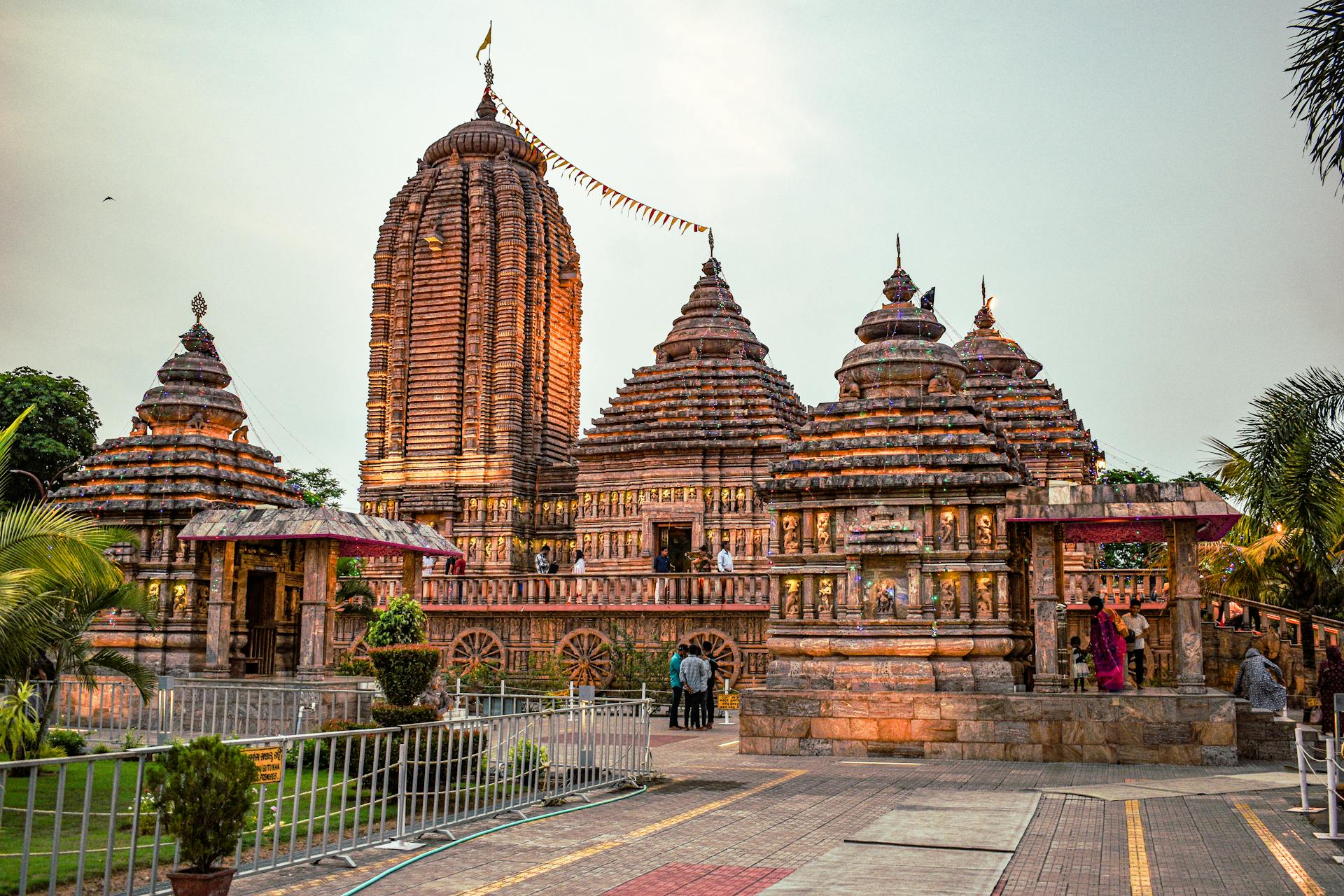When we think of sacred places in India, there are countless temples, rivers, and shrines that fill our minds. Yet, among them, Puri holds a charm that is both mysterious and magnetic. The Jagannath Puri Temple is not just a spiritual landmark; it is a living rhythm where faith, culture, and humanity merge together.
This is not merely a temple—it is a world in itself. To step into Puri is to step into a universe where stories breathe, rituals speak, and even the sea seems to sing the glory of the divine.
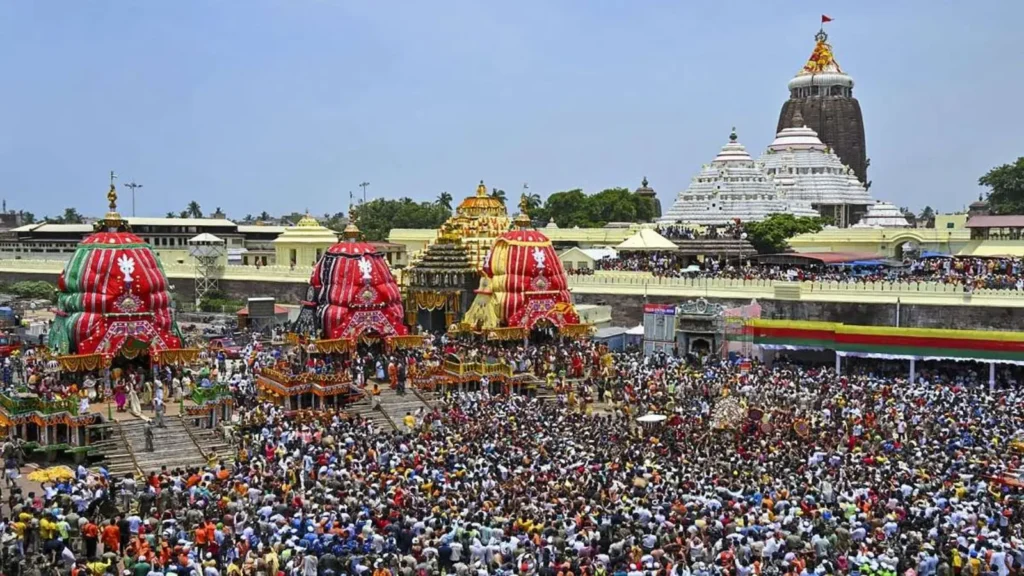
Why Puri Jagannath is More Than a Temple
For many, visiting Jagannath is not simply a pilgrimage; it is a homecoming. The deity here does not appear in the usual sculpted perfection of idols. Jagannath’s round eyes, unfinished arms, and wooden frame are symbols of inclusiveness. His form tells us that divinity is not about appearance—it is about essence.
Unlike many temples that feel exclusive or bound by rules, Jagannath Temple stands as the abode of a Lord who is for everyone. The name itself means “Lord of the Universe”. In His presence, boundaries of caste, class, or community dissolve.
A Walk Through the Sacred Streets of Puri
Before you even step inside the temple, the streets of Puri prepare you for the divine encounter. The lanes are lined with small shops selling flowers, garlands, wooden toys, seashell crafts, and piles of sweets offered as prasad. The sound of temple bells mixes with the chants of devotees and the roar of the nearby Bay of Bengal.
Every turn feels alive. You might see a child tugging at her mother’s sari to catch a glimpse of the temple tower, a sadhu sitting in meditation under a peepal tree, or groups of pilgrims singing bhajans as they walk barefoot towards the shrine.
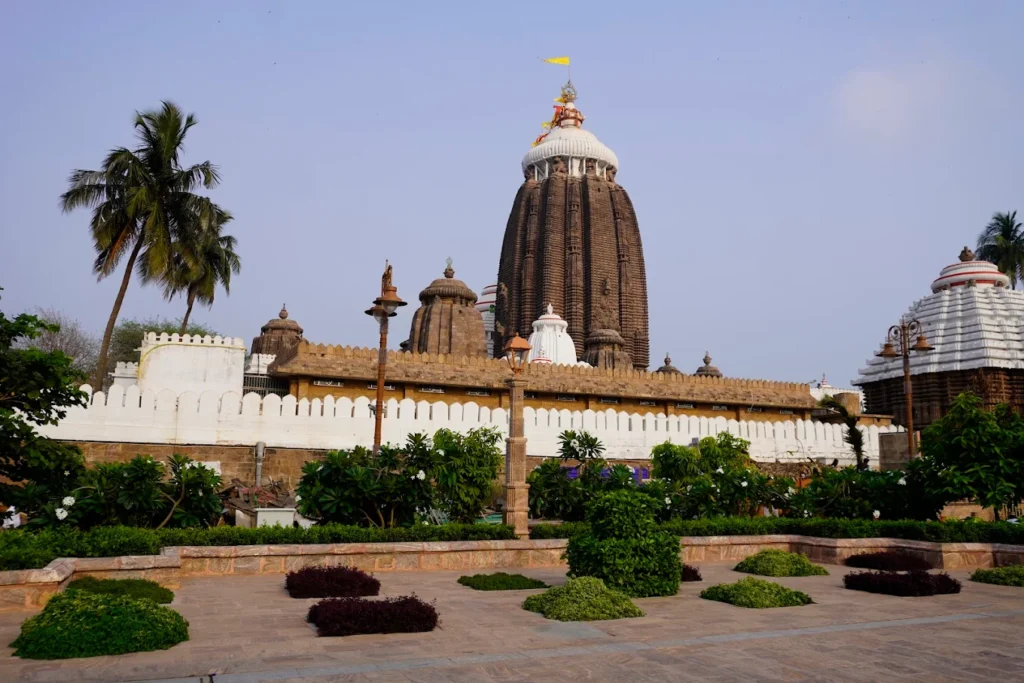
The Architecture That Tells a Story
When you first see the Jagannath Temple rising against the skyline of Puri, it is not just stone that you witness—it is history, devotion, and craftsmanship woven into one majestic form. The architecture of the temple is not only about physical beauty; it is about symbolism, spiritual meaning, and the way a structure can shape the life of an entire town. To describe the temple is to describe a living organism, because every tower, hall, and courtyard carries breath, energy, and timeless stories.
Origins of the Temple
The Jagannath Temple that stands today was built in the 12th century by King Anantavarman Chodaganga Deva of the Eastern Ganga dynasty. However, legends of the shrine go much further back in time, with references found in ancient Puranas and oral traditions. What makes this temple extraordinary is that although it has faced invasions, natural calamities, and centuries of change, it still stands tall and unbroken. Every ruler who touched it added something new, but the soul of the temple remained unchanged.
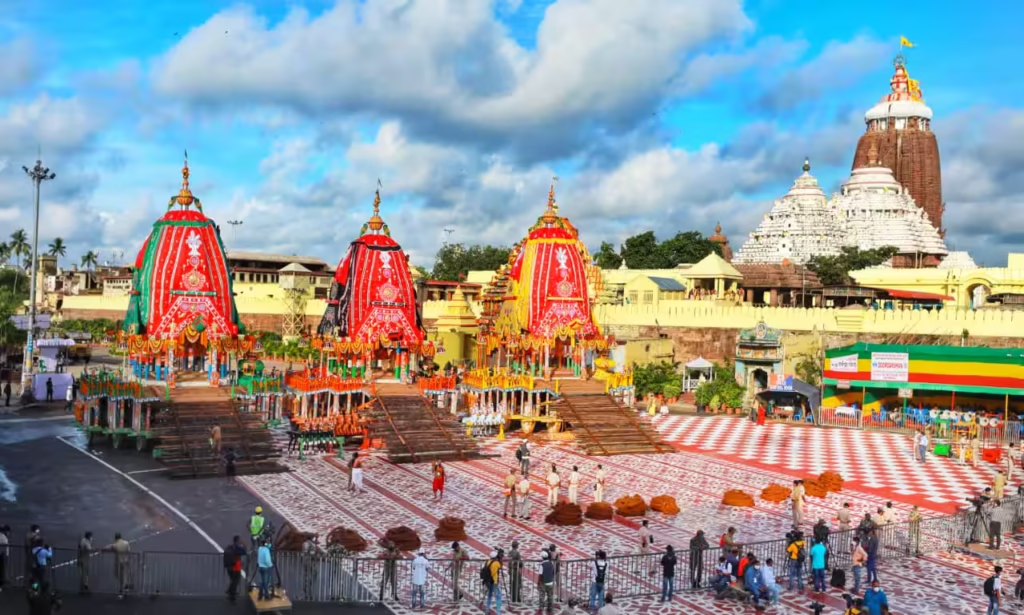
The Layout – A Sacred Geography
The entire temple complex is spread over 400,000 square feet, surrounded by a huge wall known as Meghanada Pacheri. Stepping into the compound feels like entering a different world, cut away from the noise of the outside. The layout is based on the principles of Kalinga architecture, which emphasizes verticality and grandeur.
There are four major parts to the temple:
- Vimana (Sanctum Sanctorum) – The innermost chamber where Lord Jagannath, Balabhadra, and Subhadra reside. This tower rises majestically to 214 feet and is visible from miles away, guiding pilgrims like a lighthouse of faith.
- Jagamohan (Assembly Hall) – A spacious hall where devotees gather for darshan. Its high ceiling and pillars create an atmosphere of openness, almost like a welcome embrace from the Lord.
- Nata Mandir (Dancing Hall) – A beautifully designed hall where devotional dances and music were once performed as offerings to the deity. The acoustics of this hall are so perfect that even a small sound resonates clearly.
- Bhoga Mandapa (Hall of Offerings) – The place where food is first offered to the Lord before being distributed as Mahaprasad. This hall connects spirituality with nourishment, reminding everyone that food itself is divine.
Each section is carefully aligned to represent a spiritual journey. From the outer gates where pilgrims first enter, to the sanctum where the deities reside, one moves symbolically from the material world to the inner world of the spirit.
The Tower – A Crown of Faith
The main spire, or Shikhara, dominates the entire temple complex. Rising above 200 feet, it is topped with a wheel known as the Neelachakra. This massive wheel, made of alloy metals, glitters in the sunlight and is visible even from the sea. Sailors used it as a guiding marker, calling Jagannath the protector of seafarers.
The most intriguing detail is the flag on top of the spire. Every single day, it is changed, and the person who climbs to replace it does so without any protective gear. It is said that if the flag is not replaced even for a single day, the temple will remain shut. What adds to the mystery is that the flag always flutters against the direction of the wind, defying natural logic.
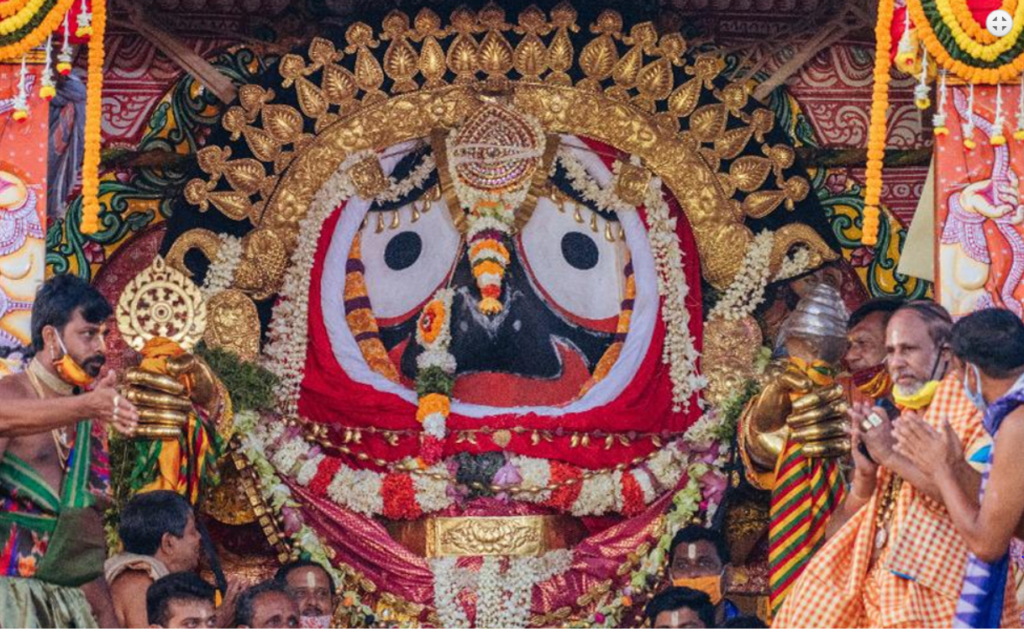
The Doors and Gateways
The temple has four main gates, each facing a cardinal direction and each carrying symbolic meaning.
- Singhadwara (Lion Gate) – The main entrance, guarded by two giant stone lions. This is where most pilgrims enter, and it symbolizes courage and strength.
- Ashwadwara (Horse Gate) – Decorated with horse sculptures, representing vitality and movement.
- Vyaghradwara (Tiger Gate) – Adorned with tiger figures, a reminder of power and protection.
- Hastidwara (Elephant Gate) – Marked by elephants, symbolizing wisdom and prosperity.
Each gate tells its own story and offers a different perspective of entering the divine world. Walking through them feels like passing through layers of meaning, shedding worldly worries, and moving closer to purity.
Walls That Speak
The outer walls of the temple are covered with carvings that tell stories from mythology, everyday life, and nature. You can see scenes from the Ramayana, the Mahabharata, and depictions of Krishna’s playful pastimes. Alongside them are carvings of dancers, musicians, animals, and floral designs.
What makes these carvings special is their liveliness. Unlike rigid depictions, the figures here seem to move. A dancer looks like she is caught mid-step, a musician seems to be strumming his instrument, and elephants appear strong and majestic. The sculptors managed to capture life itself in stone.
The Temple as a Symbol of the Universe
Beyond physical beauty, the temple architecture has deep philosophical meaning. The sanctum, where the deities reside, represents the core of existence—the soul. The assembly hall symbolizes the mind, where thoughts gather. The dancing hall represents the senses and emotions. The hall of offerings represents the body that needs nourishment.
In other words, the temple is not just a place to pray but a map of human existence. Walking through it is like walking through yourself, discovering layers of body, mind, and soul, until you finally meet the divine within.
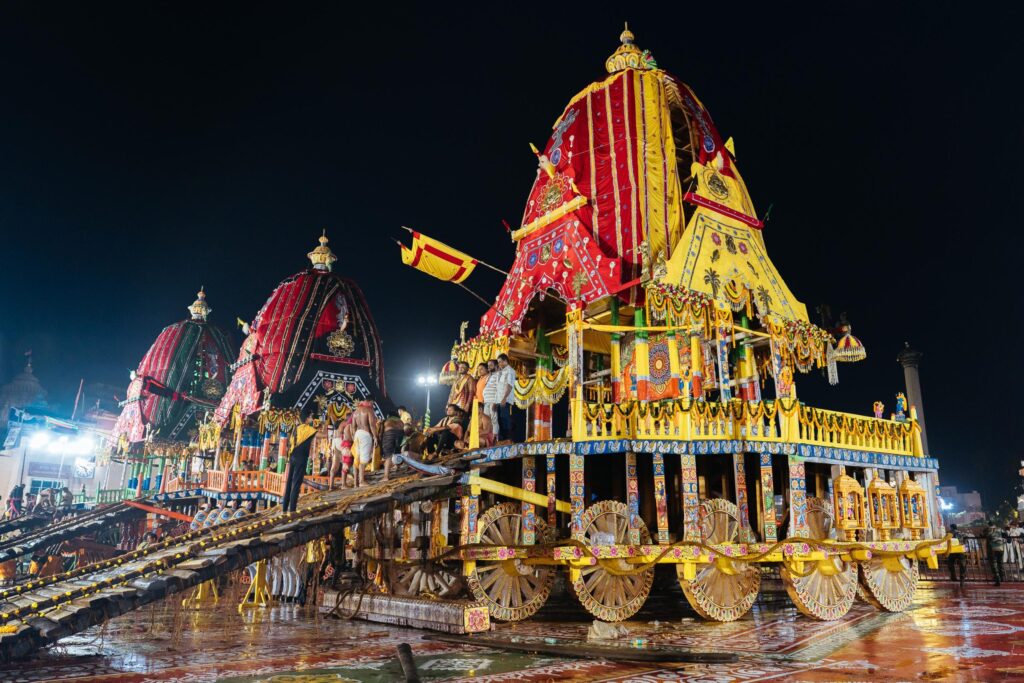
The Kitchen – An Architectural Wonder
While not a part of the main sanctum, the temple kitchen is an architectural marvel in its own right. It is the largest kitchen in the world, with around 750 wood-burning stoves and hundreds of cooks. The design ensures perfect ventilation, and the arrangement of clay pots stacked in pyramids allows food to cook in a way that science still struggles to explain.
What is astonishing is the precision of quantity. No matter how many devotees arrive on a given day—whether thousands or lakhs—the Mahaprasad never falls short. Nor is there any wastage. This balance, maintained daily for centuries, is itself part of the architectural and spiritual miracle.
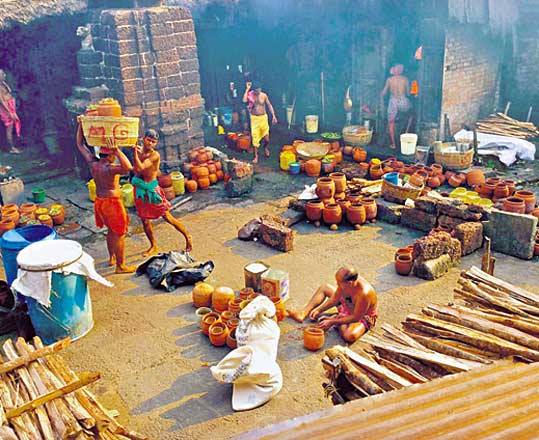
Resilience of the Temple
Over the centuries, the Jagannath Temple has faced many challenges, from invasions to storms. Several times, attempts were made to damage or plunder it. Yet, it still stands firm. Even the wooden idols, which are replaced periodically in a ritual called Nabakalebara (renewal of the body), are preserved in spirit. The temple teaches resilience—not just in faith, but in structure, design, and spirit.
Mysteries That Science Still Cannot Explain
What makes the Jagannath Temple even more fascinating are the mysteries surrounding it. These are not legends but real experiences observed by countless visitors.
- The flag on top of the temple always flutters against the wind.
- No shadow of the main temple dome is ever visible on the ground.
- The sound of the ocean disappears as soon as you step inside the temple’s main entrance, even though the sea is only a short distance away.
- The temple kitchen, the largest in the world, feeds thousands every day, and yet the prasad never falls short or goes to waste.
For locals, these are not puzzles. They simply smile and say, “Jagannath wills it.”
The Sacred Mahaprasad – A Taste of Divinity
Food is one of the most unique aspects of Jagannath Temple. The Mahaprasad here is considered as sacred as darshan itself.
The temple kitchen is a wonder of its own. Thousands of clay pots are stacked one over the other and placed on firewood. Miraculously, the top pot cooks first, followed by the ones below. No one has ever been able to fully explain how this happens.
The Mahaprasad, consisting of rice, dal, vegetables, and sweets, is distributed among devotees in the Anand Bazaar—a vast courtyard where pilgrims sit together and share food. It is not just about eating; it is about experiencing equality. In Jagannath’s dining hall, everyone is the same, whether rich or poor, king or commoner.
Rath Yatra – The Festival That Moves the World
If there is one event that defines Puri, it is the Rath Yatra. Once a year, Lord Jagannath, along with His siblings Balabhadra and Subhadra, comes out of the sanctum and rides on gigantic chariots.
These chariots are not ordinary—they are architectural giants built anew every year with special wood and precise rituals. Pulled by thousands of devotees with thick ropes, the chariots roll through the streets of Puri in a spectacle of sound, color, and devotion.
The Rath Yatra is more than a festival. It is the Lord stepping down from His throne to meet His people. It symbolizes that God is not confined to walls; He walks among us.
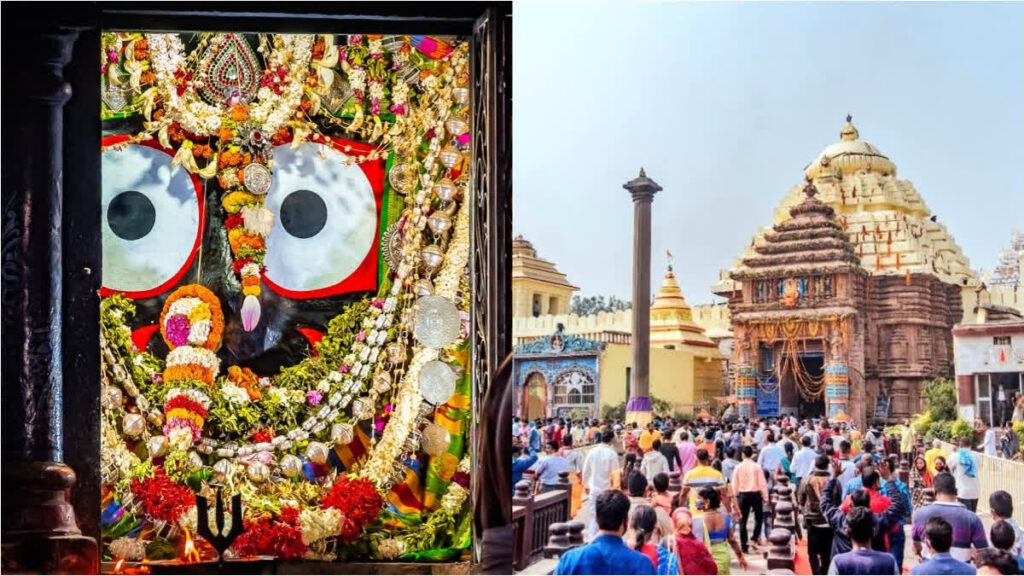
The Sea and the Temple – A Divine Connection
The relationship between the Bay of Bengal and the Jagannath Temple is one of the most fascinating aspects of Puri. It is not just geography that brings them close but a deep spiritual bond that has shaped the culture, rituals, and emotions of the town for centuries. Standing on the golden sands of Puri Beach, with the roaring sea on one side and the temple spire on the other, you feel as if nature and divinity are speaking in silence.
The Purifying Ritual of the Sea
For devotees, the sea is not only a place of beauty but also a sacred threshold. Pilgrims often begin their temple journey by taking a holy dip in the waters of the Bay of Bengal, which locals reverently call Mahodadhi, meaning the great ocean.
This ritual has symbolic meaning:
- Cleansing of the body – Bathing in the sea is believed to wash away physical impurities.
- Calmness of the mind – The vastness of the ocean prepares the mind to enter the temple with humility.
- Renewal of spirit – The act is seen as a rebirth before standing before Lord Jagannath.
With waves crashing against them, pilgrims whisper prayers and then walk barefoot towards the temple, carrying with them the freshness of the sea.

The Sea as a Protector of Devotees
History and folklore both highlight the protective connection between the temple and the sea. The Neelachakra, the mighty wheel atop the Jagannath Temple spire, has guided sailors for centuries. Visible from far into the ocean, it served as a lighthouse before technology existed.
Fishermen and seafarers even today pause to bow towards the temple before setting out. They believe Jagannath watches over them, ensuring safe returns. This faith has been passed down for generations, making the temple not only a center of devotion but also a guardian of lives tied to the sea.
Sunrise and Sunset at Puri Beach
The sea and the temple are most magical during sunrise and sunset.
- At dawn – The sky slowly turns golden, the temple tower glows in the first light, and the sound of morning conches from the temple blends with the rhythm of waves. Devotees offer water to the rising sun and then bow towards the temple spire, acknowledging both nature and God.
- At dusk – The horizon glitters with shades of orange and red, the sea reflects the fading light, and temple bells mark the evening prayers. Families gather on the beach, children play in the sand, and the air is filled with both laughter and devotion.
These moments remind visitors that in Puri, the sacred and the ordinary coexist beautifully.
Stories That Live On
Puri is not only about rituals and architecture. It is also about countless stories passed down through generations.
- Some believe that the idol of Jagannath contains a mysterious element known as the Brahmapadartha, a divine substance hidden inside and never revealed.
- Others speak of saints who attained liberation here, their souls merging into the eternal rhythm of the temple bells.
- Many devotees share personal experiences of prayers answered, of burdens lifted after a single visit to Jagannath’s abode.
These stories are not written in books—they live in the hearts of people, whispered from one pilgrim to another.
Things to Experience in Puri Beyond the Temple
While the temple is the soul of Puri, the town itself has much to offer:
- Puri Beach – perfect for sunrise and evening walks.
- Konark Sun Temple – just a short drive away, another marvel of Odisha.
- Chilika Lake – Asia’s largest brackish water lagoon, home to dolphins and migratory birds.
- Local Handicrafts – from palm-leaf paintings to intricate seashell works.
- Street Food – hot kachoris, malpua, and the famous khaja sweet.
Every corner of Puri offers something to remember, something to take back home.
Why People Keep Returning to Puri
There are places that you visit once and cross off your list. And then there are places like Puri, where every visit feels like the first, where every darshan feels new.
People keep returning not because they expect miracles but because Jagannath gives them a feeling of belonging. In a fast-moving world filled with uncertainty, Puri reminds us of simplicity, faith, and togetherness.
A Journey for the Soul
If you have never been to Puri, it is not just a trip you should plan—it is a journey you must experience. Whether you go for the darshan, the prasad, the Rath Yatra, or simply to sit by the sea watching the temple tower, you will feel something shift within you.
Puri is not about religion alone. It is about humanity, unity, and love. It teaches us that the divine is not distant—it is right here, in food shared, in festivals celebrated, and in stories told by strangers who soon become family.
FAQs on Jagannath Puri
Q1: Where is Jagannath Puri Temple located?
A1: The Jagannath Temple is located in Puri, Odisha, and is one of the Char Dham pilgrimage sites in India.
Q2: Why is Jagannath Puri Temple famous?
A2: The temple is famous for Lord Jagannath’s annual Rath Yatra, rich history, and being one of the holiest Hindu pilgrimage sites.
Q3: Who built Jagannath Puri Temple?
A3: The temple was built in the 12th century by King Anantavarman Chodaganga Deva of the Eastern Ganga dynasty.
Q4: Can non-Hindus enter Jagannath Puri Temple?
A4: No, non-Hindus are not allowed inside the temple premises, but they can view the temple from outside or from Raghunandan Library rooftop.
Q5: What is the best time to visit Jagannath Puri?
A5: The best time to visit is from October to February, with the Rath Yatra festival in June-July being the most popular.
Q6: What are Jagannath Puri Temple darshan timings?
A6: The temple usually opens around 5:30 AM and closes at 10:00 PM, with multiple aartis and rituals throughout the day.
Q7: What is the Rath Yatra of Puri?
A7: Rath Yatra is the annual chariot festival where Lord Jagannath, Balabhadra, and Subhadra are taken on grand wooden chariots.
Q8: How to reach Jagannath Puri Temple?
A8: Puri is well connected by train, bus, and road. The nearest airport is in Bhubaneswar, about 60 km away.
Q9: What food is famous in Jagannath Puri?
A9: The Mahaprasad of Jagannath Temple, prepared in temple kitchens, is famous along with Odisha’s local cuisine.
Q10: Is photography allowed inside Jagannath Puri Temple?
A10: No, photography and mobile phones are strictly prohibited inside the temple premises.

